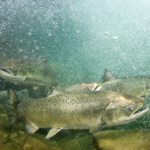The question of how to insulate the frame house is obliged to be resolved with all responsibility. The choice of insulation is not easy, even though standard projects, for the most part, suggest the use of some kind of insulation.
Conditionally, all thermal insulation materials can be divided into a couple of groups: inorganic and organic. The organic group consists of classical materials, the use of which was relevant in antiquity: peat, chips, pacli, etc. Inorganic group is mainly plates based on mineral wool, foam and polystyrene foam. Of course, inorganic insulations are more modern, and therefore have the best operational indicators.
The most popular insulation for the frame structure is called polystyrene. He is easy to use, inexpensively, but from the point of view of the perfect choice, you should not recommend it. The main drawback of foam, as, by the way, and polystyrene foam, is the fueliness. The combustion process leads to the allocation of many harmful substances. Sheets of this kind of insulation are fragile, and therefore it is necessary to constantly control so that there are no cracks and minor damage. In general, you should not trust this insulation, since there are more advanced and safe analogues.
The foam is gradually replacing such a heater for a frame house as mineral wool. Mineral wool is universality, appearing in front of the client and dense plate, and a light fibrous substance. The excellent characteristics of thermal insulation are explained by the fact that there are air layers between the layers of cotton. The second characteristic feature of the material can be called that it perfectly protects and from excess noise.
Unfortunately, the lack of mineral wool is that it contains formaldehyde. Like fiberglass, the smallest particles of mineral wool can be defined as carcinogens, and therefore, mostly dense slabs based on it are used to business.
Toxicity explains the need for interior decoration using steam and waterproofing membranes, which will not allow the particles of mineral wool to freely spread. The second drawback of this insulation is the sensitivity to humidity, because even its level at a mark of 3 percent is able to significantly worsen the heat -insulating properties half. This suggests that mineral wool should be used exclusively in combination with reliable waterproofing material.
Less common materials are considered polyurethane foam and extruded polystyrene foam. Thermal insulation indicators of the second, however, significantly exceed the characteristics of mineral wool. Unlike the classical variety of polystyrene, polystyrene foam does not burn, is durable and racks to chemicals. In general, it can be attributed to the category of eternal materials, and therefore the probability of the need to replace is extremely small.
Polyurethane foam – no less modern and perfect material. Stability to fire, environmental safety, the ability to preserve characteristics in a huge temperature interval – it allows you to produce materials with different density values.
Finally, the most advanced insulation can be recognized as an ecovata, the only minus of which is that the workers who deal with it should have a high level of qualifications.



